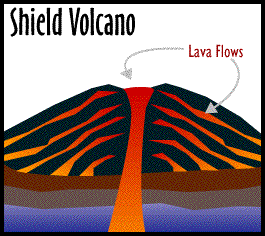A volcano is a vent or chimney which transfers molten
rock known as magma from depth to the Earth's surface. Volcanoes are usually
cone shaped mountains or hills. Some volcanoes happen underwater, along the
seabed or ocean floor.
You may also like The Door to Hell : An Interesting Place
You may also like The Door to Hell : An Interesting Place
The explosiveness of a volcanic eruption depends on how
easily magma can flow and the amount of gas trapped within the magma. Large
amounts of water and carbon dioxide are dissolved in magma causing it to behave
in a similar way to gas expanding in fizzy drinks, which forms bubbles and
escapes after opening. As magma rises quickly through the Earth's crust, gas
bubbles form and expand up to 1000 times their original size.
Difference
between Magma, Lava & Tephra :
Molten rock is called magma when it is beneath the
earth’s surface. When it is erupted and flows through a volcanic vent it is
called lava. And when it is erupted explosively as shattered fragments hurled
into the air it is called tephra
Types
:
Geologists generally group volcanoes into three main
kinds.
1. Shield volcanoes
2. Composite volcanoes
3. Cinder cone volcanoes
Positive
Effects :
·
It can provide opportunities for generating
geothermal energy.
·
It provides valuable nutrients for the soil.
·
It creates very fertile soil which is good
for agriculture.
Negative
Effects :
·
Many lives can be lost as a result of a
volcanic eruption.
·
It can destroy settlements and clear areas of
woodland or agriculture.
·
Human and natural landscapes can be destroyed
and changed forever.



































0 comments:
Post a Comment